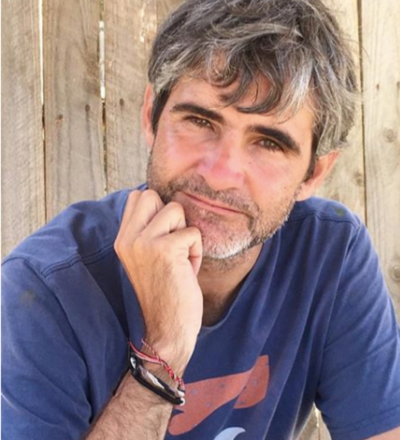Sri Lanka: Insider’s Guide
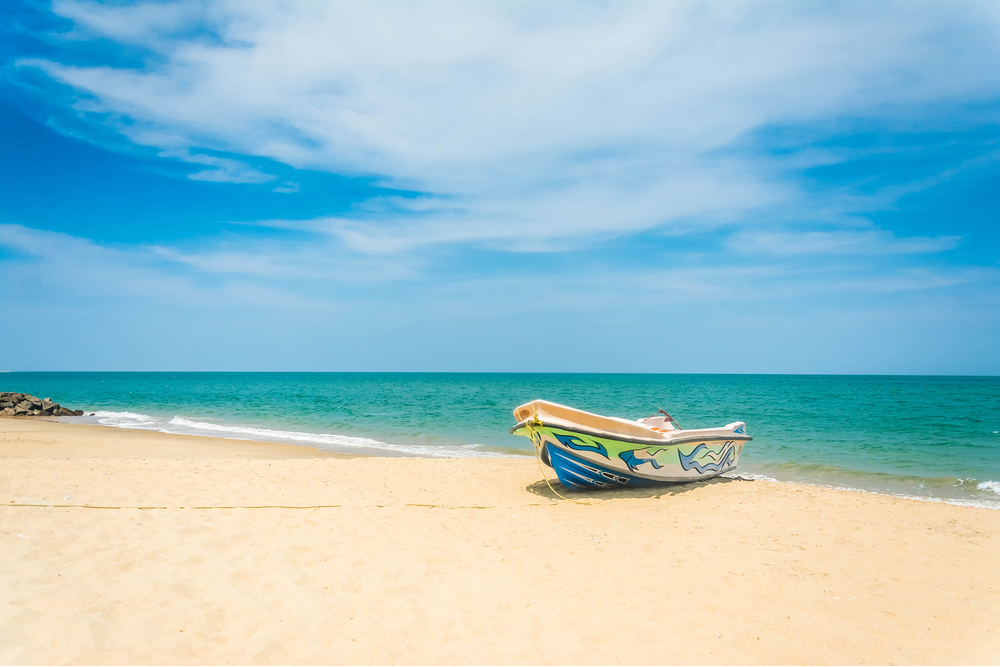 This blissful strand of sand on Sri Lanka's west coast is Kalpitiya. Photo: Shutterstock
This blissful strand of sand on Sri Lanka's west coast is Kalpitiya. Photo: Shutterstock
The insider advice on this page is from one of Wendy’s Trusted Travel Experts for Sri Lanka: Miguel Cunat of Sri Lanka In Style.
Miguel, who has been living with his family in Sri Lanka since 2003, founded his boutique travel company to provide visitors with insightful, engaging experiences in this logistically tricky but enchanting country. He plans tailor-made itineraries for travelers from around the world, designing each one based on the company philosophy of “traveling in style.” For Miguel that means getting off the beaten path without sacrificing comfort or charm, and meeting the colorful local characters who provide a real sense of place (authors, architects, even the Leopard Man). His goal is for his travelers to return from their trip “feeling rested, relaxed and pampered, if that’s what you seek, but also fulfilled and inspired.” Having watched Sri Lanka undergo so many changes in the past two decades, Miguel is deeply committed to conservation and is certified in Sustainable Tourism by the Global Sustainable Tourism Council; this brings to bear in every recommendation he makes, from the hotels he chooses to the strategies he employs for keeping his travelers far from the tour-bus crowd.
Where to Stay and Eat
Best bang-for-your-buck hotel
Tucked away in the serene countryside of Wellawaya, Uga Halloowella is Sri Lanka’s newest luxury escape, with a handful of villas nestled amidst lush greenery on the grounds of a 19th-century tea estate. This is the ideal homebase for scenic hikes to hidden waterfalls, jaunts to nearby tea plantations, or to simply unwind with a cup of Ceylon’s finest as mist rolls over the hills. Short on time? Arrive via seaplane, landing on the nearby Castlereigh Reservoir.
Restaurants the locals love
In Colombo, GINI is redefining local cuisine while using exclusively Sri Lankan ingredients, with every dish paying homage to the island’s rich culinary heritage. It’s loved by locals for its unpretentious charm, the smoky flavors of its open-fire cooking methods and generous use of local spices, and a warm, communal setting that feels like a gathering of friends.
In Galle Fort, Charlie’s Bar & Bistro is where locals go for laid-back sophistication with a Sri Lankan twist, and to enjoy its warm, welcoming vibe and a menu that blends island flavors and global favorites. Expect locally inspired small plates, fresh seafood, and bold cocktails served in a relaxed setting.
Dish to try
Ambulthiyal. This tangy, slow-cooked fish curry is unique to the island, made with goraka (a natural souring agent), aromatic spices, and minimal oil, resulting in a rich, earthy depth of flavor. It’s best enjoyed with steamed rice and coconut sambol, or straight from a clay pot.
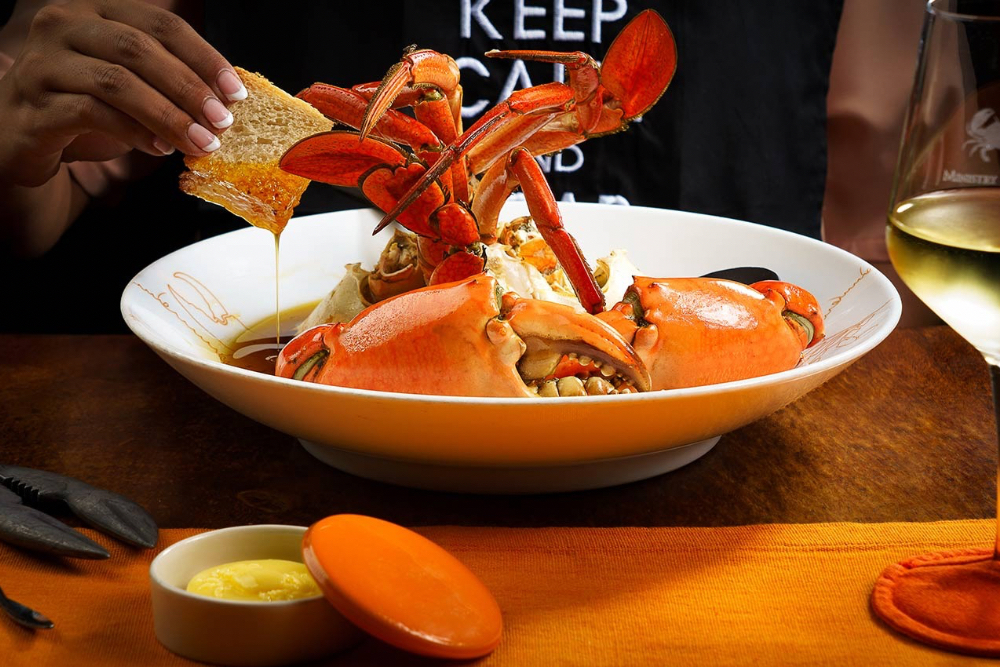
Shellfish is on the menu at Ministry of Crab. Photo: Sri Lanka In Style
Meal worth the splurge
Ministry of Crab in Colombo. Sri Lankan lagoon crab has always been a delicacy exported to Singapore, Malaysia, and other parts of Asia. A few years back, celebrity cricketers Mahela Jayawardene and Kumar Sangakkara and fellow foodie Dharshan Munidase opened the Ministry of Crab, a lively restaurant situated within the old Dutch Hospital, a 17th-century building recently restored in the heart of Colombo. Try the chili-garlic crab and the butter soy prawns—possibly the best prawns ever.
What to See and Do
Don’t miss
The 22-day, 185-mile Pekoe Trail is a new, contiguous hiking route through Sri Lanka’s tea country. Miguel spent the better part of ten years developing this trail, now funded by the EU and USAID; if you don’t have time to trek the entire thing, he can weave a section or two into your trip. Created to encourage the preservation of the diverse cultural and natural heritage of tea country, this epic trail crosses over seven valleys, many tea plantations, and some of Sri Lanka’s most stunning mountain terrain, including spectacular waterfalls where in ancient times lovers leapt to their deaths and gold was hidden under giant boulders. The Pekoe Trail also connects many culturally interesting spots, from important hill-station towns to villages with ancient festive traditions, and from colonial train stations to tea museums telling the human story of the region.
Visit a cinnamon plantation. Ceylon cinnamon was found growing wild on the hills of southern Sri Lanka when the Portuguese arrived at the turn of the 16th century, and it remains a major export of the country. A local cinnamon planter will show you how the cinnamon is painstakingly peeled and the oil extracted; you’ll also hear about the uses and healing properties of cinnamon and its grading.
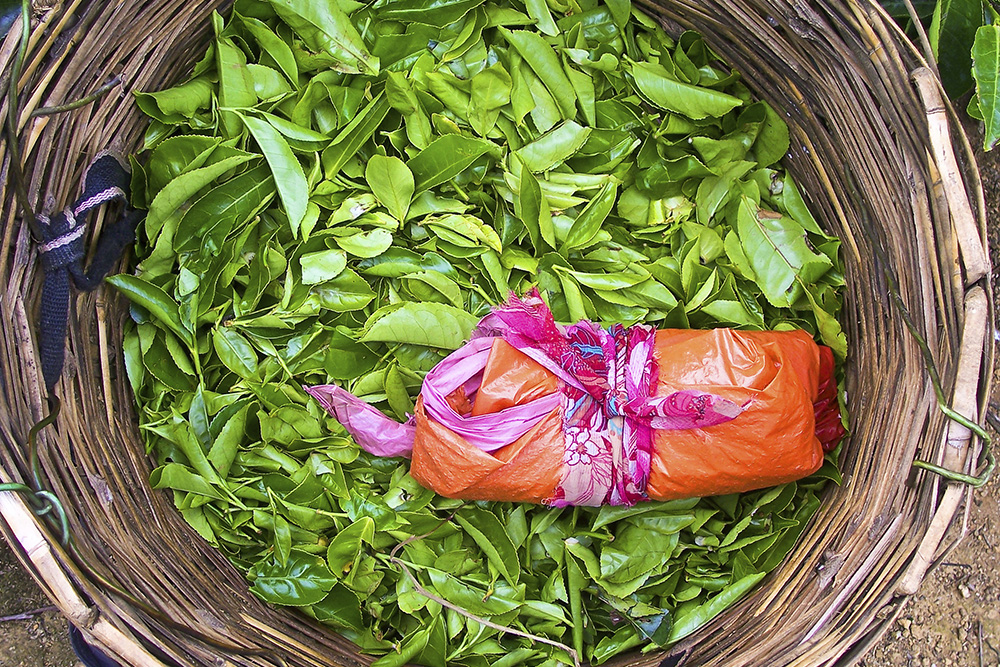
Freshly picked tea leaves in Sri Lanka’s tea country.
Don’t bother
Established in 1972, the Pinnawala Elephant Orphanage began with noble intentions—to care for orphaned and injured elephants affected by habitat loss, land development, and the country’s civil conflict. Over time, however, it has become a major tourist attraction. Today, the experience here often involves large crowds gathered to watch scheduled feedings and bathing sessions, raising concerns about the welfare of the animals and the authenticity of the encounters.
Sri Lanka’s southern coast is home to remarkable sea turtle populations—but many turtle hatcheries prioritize tourism over true conservation. For a more meaningful and ethical experience, head to Rekawa Beach, where local conservationists guide small groups to observe turtles nesting in the wild. No tanks, no crowds—just you, the stars, and one of nature’s most moving rituals.
Most underrated place
Gal Oya National Park is an expansive sanctuary for those seeking an authentic and tranquil wildlife experience. It encompasses the Senanayake Samudraya, Sri Lanka’s largest reservoir, on which visitors can enjoy a boat safari and perhaps glimpse elephants swimming between islands. Gal Oya also offers cultural immersion through interactions with the indigenous Vedda tribes, providing insights into traditional forest-dwelling lifestyles.
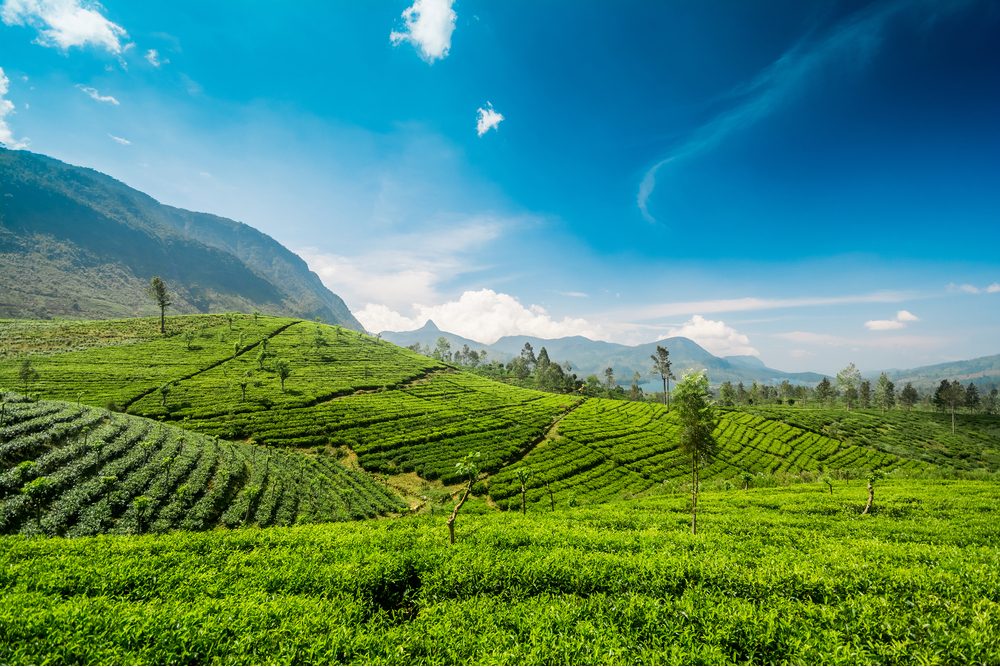
A tea-plantation view with the conical Adam’s Peak, also known as Sri Pada, in the distance. Photo: Shutterstock
Best for thrill-seekers
A pre-dawn climb to Adam’s Peak (Sri Pada). The trek involves ascending more than 5,500 steps, but the breathtaking sunrise above mist-covered valleys is well worth it. A sacred site across multiple faiths, Adam’s Peak is believed to hold the footprint of Buddha, Shiva, or Adam.
Canyoning on the Kelani River. The river, which runs west from the central highlands to Colombo, has a densely forested section called Kitulgala that’s ideal for rafting and canyoning. Laxapana Falls, one of Sri Lanka’s highest and most spectacular waterfalls, is also found on the river, and there are a few truly amazing hidden gorges to rappel, jump, and slide down. (Film buffs might also recognize Kitulgala as the location of the 1957 film Bridge Over the River Kwai).
Bragging rights
Depending on which aspect of Sri Lanka you’re particularly keen to delve into, Miguel can arrange get-togethers with all sorts of engaging local experts or connoisseurs in Galle or Colombo. For example, you might share a meal with Malik Fernando, owner and CEO of Dilmah, Sri Lanka’s premier brand and largest exporter of tea. Or camp at the borders of Yala National Park and dine in style with Noel Rodrigo, a prominent wildlife expert otherwise known as the Leopard Man. Or stroll the Royal Botanical Gardens in Peradeniya, near Kandy, and stop for lunch with botanist Bandara Palipana. You can also choose to meet prominent local architects, writers, photographers—whatever tickles your fancy.
Instagram moments
The Kandy to Ella train ride is more than just transport. Picture this: windows wide open, the wind in your hair, and sweeping views of tea-cloaked hills, mist-laced forests, and locals waving from colorful villages. Every curve of the track reveals a new, frame-worthy scene—whether it’s the blue train hugging a cliffside or golden light spilling over valleys.
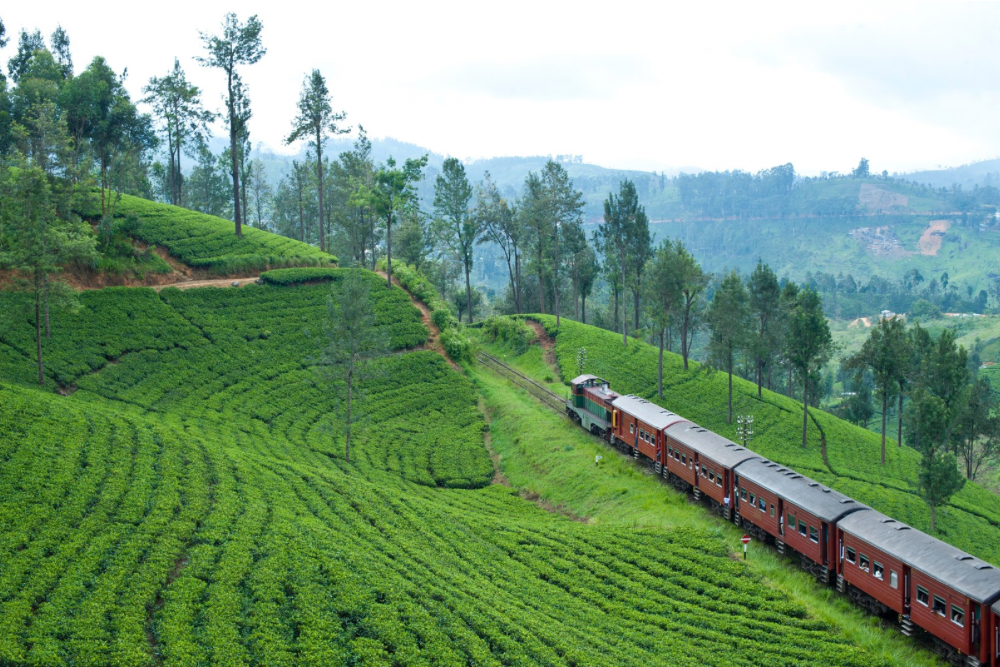
Take a scenic train ride through Sri Lanka’s tea plantations. Photo: Sri Lanka In Style
Sigiriya might steal the headlines, but those in the know hike up nearby Pidurangala Rock for a crowd-free, soul-stirring view—especially at sunset. While the climb is slightly rugged near the top (expect a bit of scrambling), the reward is immense: a panoramic view of the iconic Sigiriya Rock bathed in golden light, and hardly a soul around.
Where to shop
Selyn, Sri Lanka’s only fair trade-certified handloom company, collaborates with traditional weaving communities to create beautifully crafted sarongs, scarves, and home textiles, all made from 100% cotton and reflecting the dedication and skill of local artisans. Barefoot, founded in 1958 by artist and designer Barbara Sansoni, is also renowned for its handwoven clothing, bags, and home décor items characterized by bold colors and contemporary designs.
How to spend a Sunday
Start your Sunday at Good Market, where you’ll find organic produce, sustainable fashion, and handmade crafts by local entrepreneurs. It’s the perfect place to grab a fresh smoothie, browse artisanal goods, and soak in the community atmosphere.
Next, take a leisurely stroll down Park Street Mews, a chic alleyway lined with cafés, restaurants, and art galleries. For lunch, head to Café Kumbuk, known for its healthy fusion cuisine with a Sri Lankan twist.
In the afternoon, explore Sri Lanka’s contemporary art scene at Barefoot Gallery (see “Where to shop”), where you’ll find thought-provoking exhibitions, a curated bookshop, and a laid-back courtyard café.
End your day with sunset drinks by the sea at the iconic Galle Face Hotel. Overlooking the Indian Ocean, it’s the perfect spot to sip a cocktail, watch the sky turn gold, and enjoy Colombo’s historic seafront.
Best Times to Go
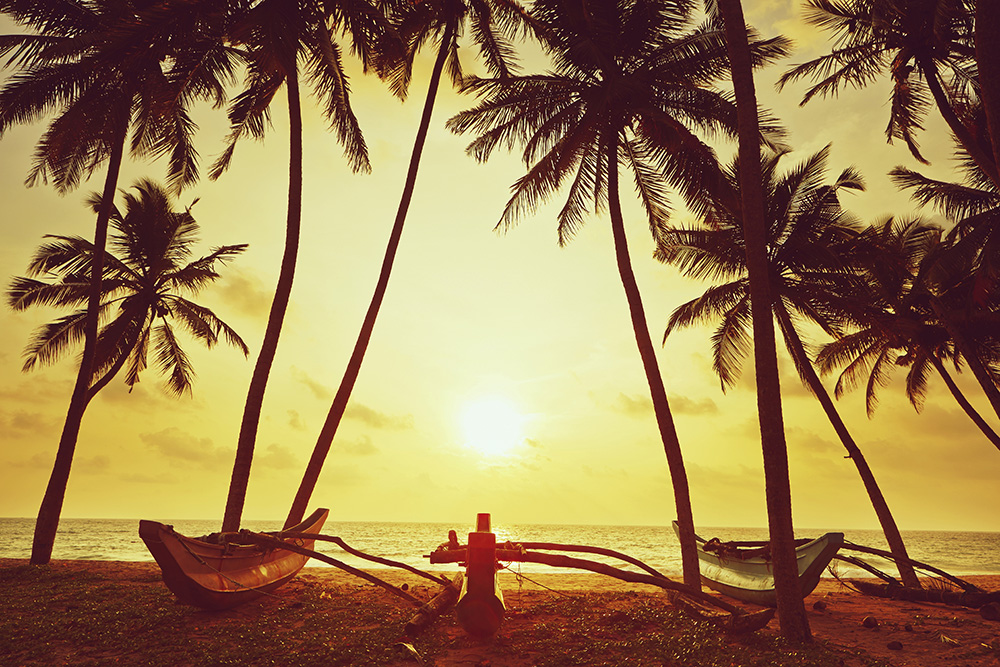
The last two weeks of January and the first two weeks of March. February is a very good month, but, alas, a busy one, with plenty of people coming to Sri Lanka on half-term or over the Chinese New Year from Singapore, Hong Kong, Bangkok, Dubai, and other parts of Asia. The weather in January is delightful—springlike temperatures and blue skies. As the weeks roll by, temperatures begin to rise, peaking in April.
Worst Times to Go
The worst time to go is anyone’s guess, because it’s simply impossible to predict the weather. There are usually two or three weeks a year—anytime between May and December—when torrential rains fall, occasionally flooding roads and provoking landslides.
Late December, February, and the first two weeks of August are the busiest periods. But Sri Lanka is not a mass-tourism destination, so as long as you book early—to make sure you’re in the right hotels and are assured an excellent guide—and plan your days with a view to avoiding certain hot spots at critical times, you’ll be fine. If you’re booking last-minute, think twice: You may have to settle for second best.
Biggest Rookie Mistake
Sri Lanka looks small on a map, but it can take hours to get from place to place, and there are definite no-nos. For instance, don’t try to travel from Kandy to Yala National Park in one day, or from the Cultural Triangle to the beaches of Tangalle, or from Jaffna to Colombo. On Google Maps, distances and approximate travel times are misleading. Sri Lanka offers great diversity and looks like you can tick all the boxes in one week—you can’t. If you want to speed things up a little, try flying on certain segments. Two local operators offer scheduled flights around the country: Cinnamon Air and Daya Aviation.
Scam Alert
Sri Lanka has fabulous sapphires and many other precious stones, but like most places, you have to be very careful that you don’t overpay or wind up with a fake. Be mindful of guides who insist you visit a gem shop (which often happens with cheaper tours but is strictly forbidden on Miguel’s trips). Always purchase gems from a reputable dealer licensed by the National Gem and Jewellery Authority and ensure you receive a certificate and a money-back guarantee. Miguel can provide a list of recommended and licensed shops. The National Gem and Jewellery Authority in Colombo will also appraise gems free of charge in various locations around the country and help determine the value.
Must-Have Apps
YAMU is a locally produced Colombo City guide with up-to-date news and special offers from local restaurants.
Most Sri Lankans have WhatsApp, including guides and chauffeur-guides. Miguel can create a WhatsApp group for your trip to easily connect you with guides and office staff.
Uber is an efficient way to get a ride in Colombo.
Airport Intel
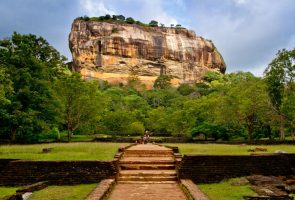
Colombo International Airport is fairly small and extremely easy to navigate. There is only one main terminal. A good way to avoid the queues both on arrival and departure is to purchase an Airport Aviation assistance package called the Silk Route.
U.S. citizens need a visa to enter Sri Lanka. You can get one on arrival, but you’ll save yourself a lot of time waiting in line if you apply online in advance.
Tipping Tip
At hotels the easiest way to avoid the stresses of tipping every waiter, porter, and bellboy is not to tip anyone on the spot but instead to ask for the “tip box” when checking out. You need not feel awkward when the bellboy brings the luggage, simply say thank you and mention you will leave a tip in the tip box at the end of your stay. A good tip is $10 to $20 per room per day.
Don’t Forget to Pack
Something to cover your arms when visiting temples. (You need to cover your knees as well, but you easily can buy a cheap sarong for that in Sri Lanka.) Don’t bring t-shirts with images of Buddha, and if you have a Buddha tattoo, never show it.

